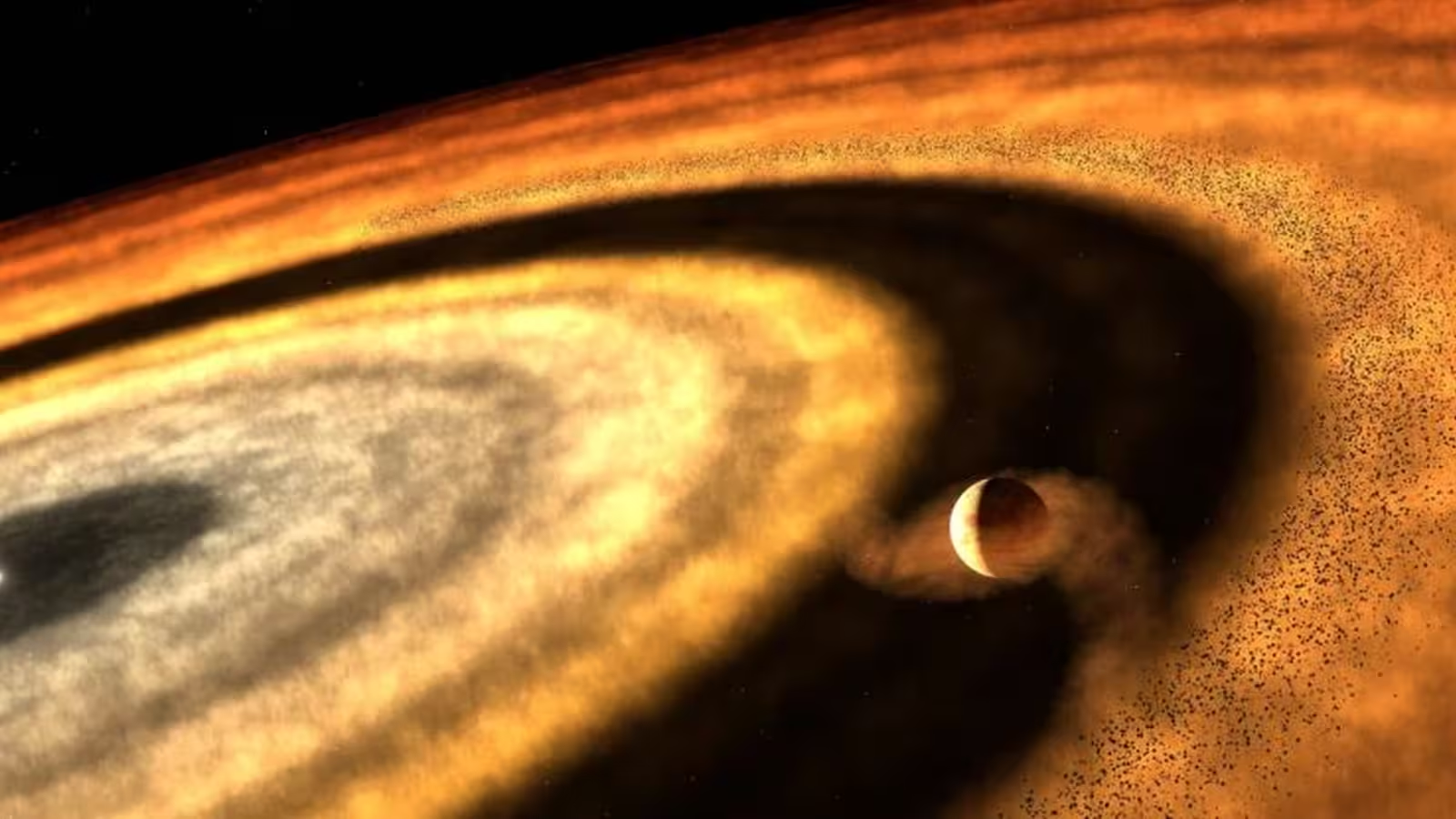5 Minutes
Introduction: Unveiling Tylos, an Extreme World Among the Stars
Among the countless exoplanets orbiting distant stars, few captivate astronomers like WASP-121b, also known as Tylos. Positioned approximately 880 light-years from Earth, Tylos is a gas giant so extreme that its atmosphere contains clouds of vaporized metals—an environment so hostile and unusual that it challenges our understanding of planetary formation and evolution in the Milky Way.
The Birth of a Planet: Dust, Pebbles, and the Protoplanetary Disk
Building Worlds from Cosmic Debris
Planetary systems emerge from the remnants of collapsing molecular clouds, which form stars surrounded by rotating disks of dust, rock, and gas called protoplanetary disks. As the central star ignites and grows, remaining material forms pebbles and icy grains that coalesce, gradually merging into larger planetary bodies. In the case of Tylos, recent findings confirm that it originated from such cosmic leftovers: small rocks and dust formed during its parent star's earliest years.
Tracing Tylos's Origins with Atmospheric Chemistry
A breakthrough came when astronomers, using the James Webb Space Telescope (JWST), detected silicon monoxide—a telltale sign of vaporized rock—alongside water vapor, carbon monoxide, and methane in Tylos’s atmosphere. "The balance of elements like carbon, oxygen, and silicon helps us decipher how WASP-121b formed and what kind of material it acquired during its early stages," explains Dr. Thomas Evans-Soma, lead researcher at the University of Newcastle, Australia.

Tylos's Extreme Orbit and Physical Characteristics
WASP-121b is classified as a "hot Jupiter," a term for gas giants that orbit extremely close to their host stars. Tylos is about 1.75 times the radius of Jupiter but only 1.16 times its mass, making it inflated and airy. Its host star, dubbed Dilmun, is a yellow-white celestial body approximately 1.5 times the Sun’s size. The planet races around Dilmun in just 30 hours, placing it so near its star that the intense heat causes its atmosphere to expand and even evaporate. During each orbit, Tylos passes directly between Dilmun and Earth—creating the perfect setup for astronomers to analyze how starlight filters through its turbulent, metal-rich atmosphere.
Key Discoveries: The Role of Silicon Monoxide and Methane
Atmospheric Forensics: Silicon Monoxide as the Smoking Gun
Detecting silicon monoxide is a rare achievement; its presence indicates the existence of vaporized rock in the atmosphere and supports the theory that Tylos formed far from its host star, where such materials can survive. Only sophisticated instruments like JWST can isolate such faint signals, enabling researchers to reconstruct the exoplanet’s evolutionary path.
The Snow Line and Planetary Migration
Analysis of Tylos's atmospheric ratios revealed its formation likely occurred beyond the "snow line"—the distance in the protoplanetary disk where water and methane freeze into ice. In our Solar System, this is between Jupiter and Uranus. Because Dilmun shines hotter than our Sun, Tylos must have originated even further out before migrating inward to its current, searing orbit. This migration supports leading models of how hot Jupiters end up so close to their stars—a long-standing mystery in exoplanet research.

Unusual Methane Distribution: Vertical Mixing on a Melting World
Another curious discovery involved methane, detected in surprisingly high quantities on Tylos’s nightside—the hemisphere permanently turned away from Dilmun. Typically, methane breaks down at high temperatures, so its abundance in the upper atmosphere defies expectations. The team attributes this to vigorous vertical mixing, where powerful currents transport methane from the planet’s deep interior up to regions detectable by telescopes. As Evans-Soma notes, "This challenges current models of exoplanet atmosphere dynamics and calls for a rethinking of how such extreme vertical mixing operates on hot Jupiters."
Broader Implications and Future Exploration
Pushing the Boundaries of Exoplanet Science
WASP-121b stands out among nearly 6,000 confirmed exoplanets because of its richly detailed atmospheric fingerprint and dramatic journey through its stellar system. Its strange chemistry and dynamic environment not only shed light on planetary evolution near powerful stars but also prompt scientists to refine theoretical models for gas giants and their migrations.
Advanced observatories like JWST will continue to revolutionize exoplanetary science, offering fresh opportunities to understand atmospheres, weather patterns, and potential for habitability—even in the most forbidding corners of our galaxy.
Conclusion
The saga of WASP-121b, or Tylos, underscores the remarkable diversity of worlds sculpted by cosmic dust and gas. Its formation from tiny pebbles and ongoing obliteration by a relentless host star offer a vivid window into the cosmic processes that shape extreme exoplanets. As researchers decode its atmosphere and migration history, Tylos continues to inform our search for knowledge about planetary systems throughout the Milky Way, serving as both a puzzle and a beacon for the next era of astronomical discovery.


Leave a Comment